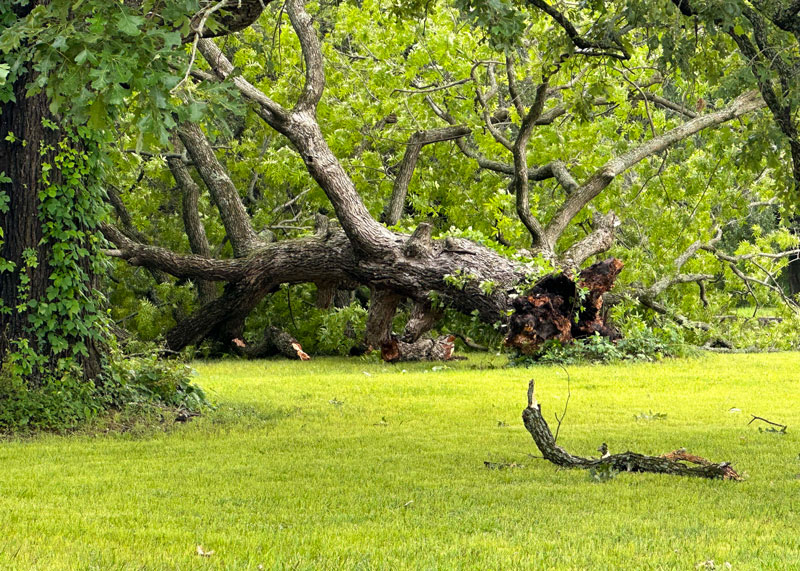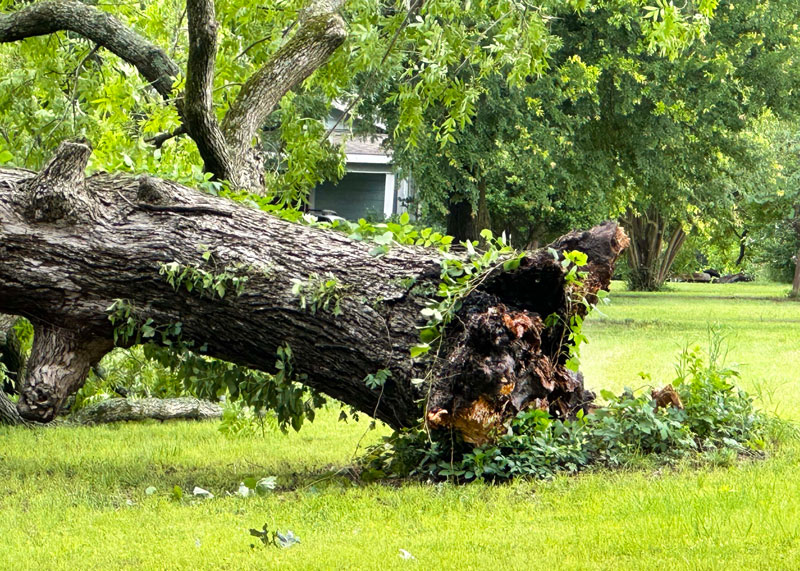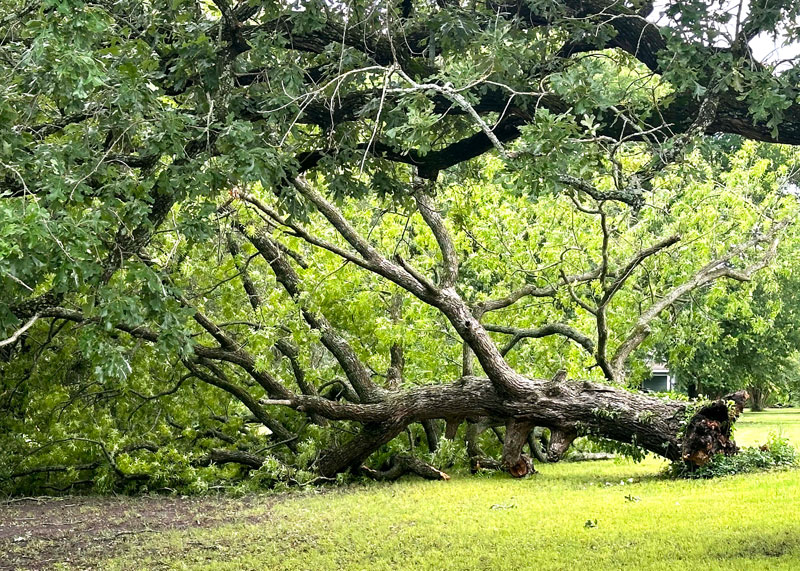Watch mature trees carefully
If you don’t know your shade trees, it pays to know people who know trees. That’s why it’s important to have a certified arborist keep an eye on the trees at your place a couple of times every year.
I learned that lesson 20 years ago when a massive American elm fell in our forest. I had no idea the tree was in distress. It was 44 inches in diameter, almost a perfect partner to a 48-inch elm that stood less than 10 feet to the west.
We live on 11 acres of old-growth mainly pecan and red oak forest. The tree that fell was in a thicket of poison ivy, blackberry, and bramble undergrowth on the side of a dry stream bed. There was no way to mow it, and I had no interest in trying to trim it out by hand.
To the contrary, the tree to the west marked the boundary of our formal backyard landscape. Had it fallen, it would have crushed a half-acre landscape I’d developed over the previous 10 years. I quickly decided I need to watch its progress more closely.
The downed tree, I observed, had no internal wood. It was all rotted out. Totally hollow. Only a 3-inch cylinder of bark and external wood remained holding things upright. When I noticed a stub of an old branch in the top of the surviving tree, I figured it, too, was decaying, and that it, too, would soon fall.
I contacted my certified arborist friends (who still advertise here), and they brought that tree down safely and preventively. And lucky they did, because it, too, was hollow. And the surrounding surviving trees have since filled in the void very well.

Back to current events…
So, now to this recent lost tree up the road from us. You can see from the closer photo that its internal wood was completely decayed (dark color, wet wood). It’s gotten wet from a void – probably a rotted stub of a branch or even initially a small twig.

Over the years the deterioration worked its way clear to the ground. Finally, the wind early Monday morning was simply too much for it. The tree offered too little support and all it could do was to snap at the ground. I told Lynn it must have made an earth-rumbling thud as that huge tree came down.
There is a natural aging process among all living beings. Sadly, those of us older than the prime years of our 20s and 30s realize that fact all too well. The symptoms accumulate.
Veteran arborists learn to recognize the symptoms in their patients (our trees). Thinning canopies, dying, branches, and signs of decay visible through discolorations in the bark. I’m seeing those signs on a large pecan tree that overhangs a county road that we drive frequently. I’m about to write our county commissioner to warn that a major branch could break at any time. It should be removed before someone gets hurt.
Trees are wonderful parts of our lives. They shelter us. They cool us. They provide recreational space for our families. They hold our soil in place. But they, too, do have life expectancies. As keepers of the land, we must keep constant watch on our trees. Sometimes that’s very difficult, even for those of us in the profession. I have a certified arborist and his team look at our trees two times per year. But I can’t afford to have them look at every tree on our 11 acres. I do understand that.

If you have trees that are especially valuable to your property or that would pose a risk of damage or injury should they fail, consider hiring a certified arborist to watch over them on a regular basis. Sometimes little problems can be stopped, and decades of life expectancy can be added.

